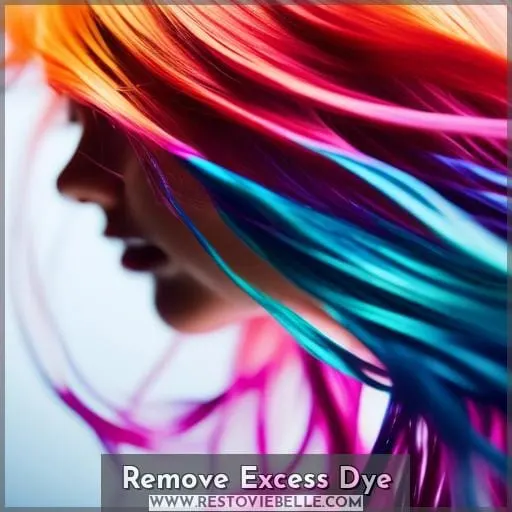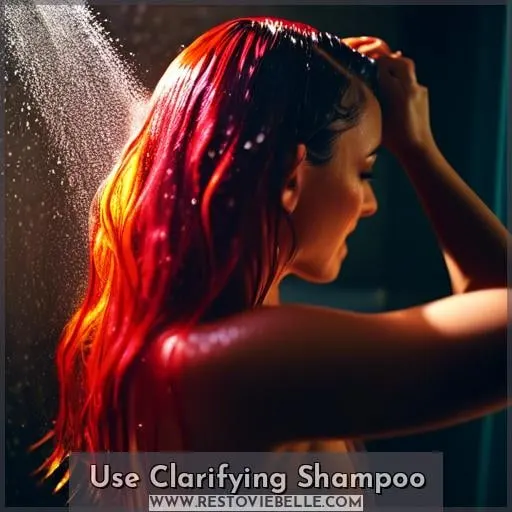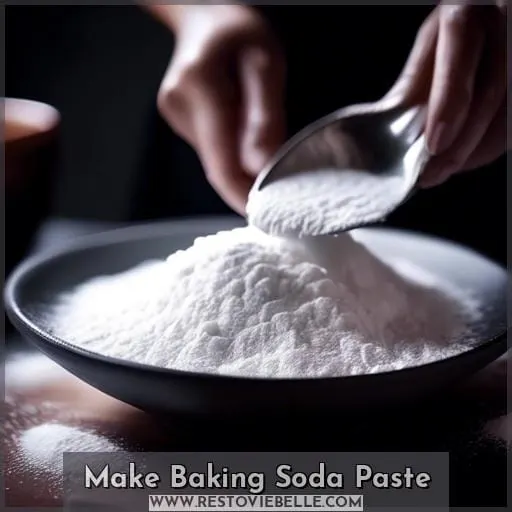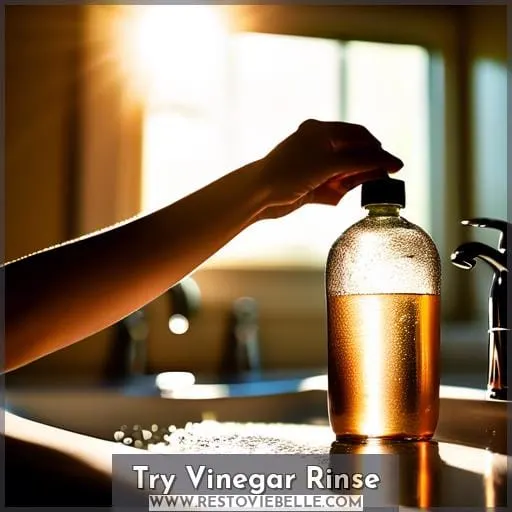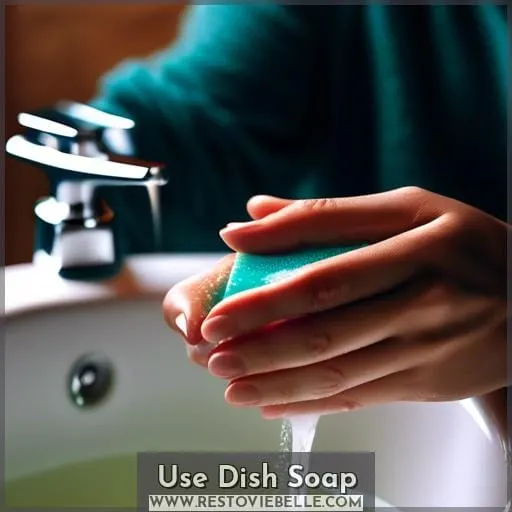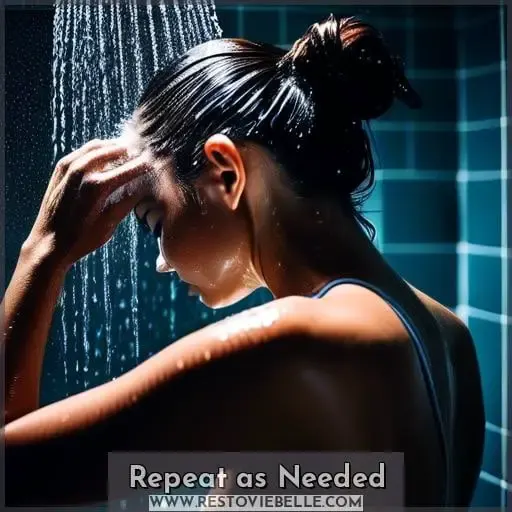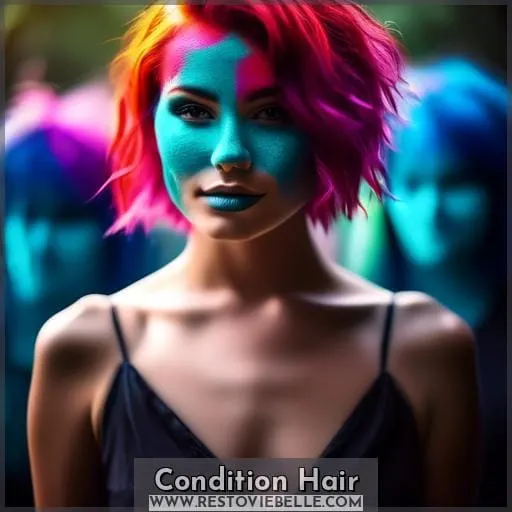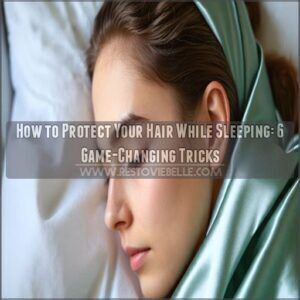This site is supported by our readers. We may earn a commission, at no cost to you, if you purchase through links.
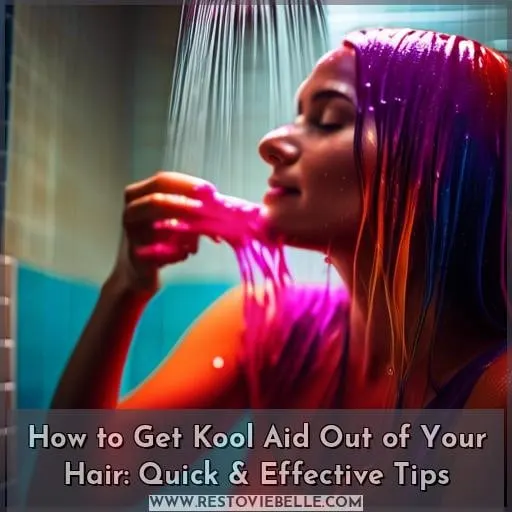 Imagine vibrant streaks of Kool-Aid colors dancing through your hair, a playful nod to your creative spirit.
Imagine vibrant streaks of Kool-Aid colors dancing through your hair, a playful nod to your creative spirit.
But when it’s time to wave goodbye to that bold hue, you might find the remnants stubbornly clinging on.
Don’t fret—you’re not stuck with it forever.
I’ll guide you through quick and effective tips to wash away the Kool-Aid and restore your hair’s natural charm, ensuring you’re ready for your next adventure with a fresh canvas.
Yes, you can remove Kool-Aid from your hair by creating a paste with equal parts shampoo and baking soda, applying it in the shower, and rinsing with hot water. This method may require repetition over 2-3 days and should be followed by deep conditioning to counteract dryness.
Table Of Contents
- Key Takeaways
- Remove Excess Dye
- Use Clarifying Shampoo
- Make Baking Soda Paste
- Try Vinegar Rinse
- Use Dish Soap
- Repeat as Needed
- Condition Hair
- Frequently Asked Questions (FAQs)
- Can Kool-Aid hair color cause allergic reactions or skin irritation?
- How does swimming in chlorinated water affect Kool-Aid dyed hair?
- Is it safe to use heat styling tools on Kool-Aid colored hair?
- Can Kool-Aid hair color be applied over henna-treated hair without adverse effects?
- How does exposure to sunlight impact the longevity and vibrancy of Kool-Aid hair color?
- Conclusion
Key Takeaways
- Baking soda is a key ingredient for removing hair dye, and it can be used either alone or mixed with shampoo to create a paste that helps strip the color more quickly.
- Clarifying shampoo can aid in the removal of hair dye, and it’s recommended to let it sit briefly in the hair before rinsing.
- Vinegar, diluted with water, can be used as a rinse to help fade hair dye, but it should be noted that this method can be drying to the hair.
- Deep conditioning is important after using these dye removal methods, as they can be drying and strip the hair of its natural moisture.
Remove Excess Dye
To effectively remove excess Kool-Aid dye from your hair, it’s crucial to start with a thorough rinse.
After applying any removal method, gently blot your hair with a towel to remove excess water.
This initial step is essential for preparing your hair for further treatment and ensures that any subsequent methods to fade or remove the dye are more effective.
Rinse Thoroughly
To effectively remove excess Kool-Aid dye from your hair, you’ll need to rinse it thoroughly under running water until the water runs clear, ensuring that all traces of the color are washed out.
Use lukewarm water to prevent further hair damage, as hot water can accelerate color fading.
Gently pat your hair dry with a towel to avoid rough handling, and follow up with a moisture-replenishing conditioner to keep your hair healthy.
Blot With Towel
After rinsing thoroughly, you’ll want to gently blot your hair with a towel to remove any excess dye.
- Choose a towel with high absorption rate to ensure quick drying.
- Opt for a towel with fabric softness to prevent hair breakage.
- Press gently to minimize color bleeding and dye transfer.
- Avoid rubbing to reduce the risk of further hair staining.
Use Clarifying Shampoo
When looking to remove Kool-Aid from your hair, reaching for a clarifying shampoo can be a quick and effective method. This type of shampoo is designed to deep clean your hair, removing not just everyday dirt and oil, but also more stubborn substances like the dye from Kool-Aid.
Simply apply the clarifying shampoo to your hair, let it sit briefly to break down the color, and then rinse it out thoroughly.
This process can help expedite the fading of the Kool-Aid color, making it a convenient option for those seeking to return to their original hair color or prepare for a new dye job.
Apply to Hair
Once you’ve rinsed out the excess dye, you’ll want to apply a clarifying shampoo to your hair.
This step is crucial for color fading and maintaining hair health. If you’re unsure about the process or its effects on your hair styling, don’t hesitate to seek a professional consultation.
Clarifying shampoo acts differently than temporary dyes, targeting the bright colors and removing them more effectively.
Let Sit Briefly
Apply the clarifying shampoo to your hair, ensuring full coverage, and allow it to penetrate the strands for a few minutes to help break down the Kool-Aid dye. This step is crucial for effectively removing the temporary color from your hair.
Here are three key points to remember during this process:
-
Shampoo Duration: The time you let the clarifying shampoo sit in your hair can significantly impact the color removal speed. A few minutes are usually sufficient, but this can vary based on hair porosity and the intensity of the Kool-Aid color.
-
Hair Type and Texture: Your hair’s texture and type can affect how the shampoo works. For example, thicker, coarser hair might require a longer duration or additional applications compared to finer hair.
-
Repeat as Needed: Depending on the depth of the Kool-Aid color and your hair’s porosity, you might need to repeat the shampooing process to fully remove the dye.
Rinse Out
To rinse out the Kool-Aid dye using clarifying shampoo, follow these steps:
- Wet your hair thoroughly.
- Apply a generous amount of clarifying shampoo to your hair, focusing on the dyed areas.
- Gently massage the shampoo into your hair, creating a lather.
- Let the shampoo sit for a few minutes to help fade the color.
- Rinse your hair with warm water until the shampoo is completely removed.
- Follow up with a deep conditioner to replenish moisture, especially if your hair feels dry after the treatment.
| Before Treatment | After Treatment |
|---|---|
| Semipermanent color | Faded color |
| Dry, uneven tones | Even, softer tones |
| Visible food dyes | Reduced dye visibility |
Incorporating a clarifying shampoo boost, alongside methods like baking soda paste, vinegar rinse, and a dish soap dab, can significantly enhance the removal process. Remember, shampoo frequently but gently, and always condition after to maintain hair health.
Make Baking Soda Paste
Baking Soda Paste for Fading Kool Aid Hair Color
To help fade temporary hair dye from Kool Aid, you can create a simple baking soda paste.
- Mix equal parts baking soda and shampoo.
- Apply the paste to your dyed hair.
- Let it sit for 15-30 minutes.
- Rinse your hair with hot water.
This method can be effective in pulling out temporary hair dye.
Reference: User-provided information.
Mix With Shampoo
After using a clarifying shampoo, you’re ready to mix equal parts baking soda and shampoo to create a paste for color fading.
- In an empty shampoo bottle or small container, mix 1 tablespoon of baking soda with an equal amount of your regular shampoo.
- Stir the mixture until it forms a semi-viscous paste, adjusting the consistency as needed for your hair’s porosity.
- Apply the paste to your hair, starting at the roots and working through to the ends.
- Leave the mixture in your hair for 15 to 20 minutes, then rinse thoroughly with warm water.
- Deep condition your hair afterward to counteract any potential dryness from the baking soda.
Let Sit 15 Minutes
Once you’ve mixed the baking soda and shampoo to create a paste, you’ll need to let it sit in your hair for about 15 minutes.
This step is crucial in color correction techniques, allowing for gentle cleansing without harsh chemicals.
It’s also a moment for your scalp to absorb moisture restoration, embracing natural alternatives for a healthier hair journey.
Try Vinegar Rinse
If you’re looking to remove Kool-Aid from your hair and want a natural solution, a vinegar rinse might be just what you need.
Simply dilute vinegar with water and rinse your hair with the mixture.
This method is straightforward and can be an effective way to fade the Kool-Aid color from your hair.
Dilute With Water
Vinegar, when diluted with water, can help remove Kool-Aid dye from your hair by breaking down the color molecules. Use lukewarm water to ensure gentle rinsing without stripping away essential oils.
This method aids in color dilution and also helps to seal the cuticles, promoting moisture replenishment.
Rinse Hair With Mix
Having rinsed your hair with the vinegar and water mixture, check for any remaining dye before moving on to the next step.
- Observe your hair in natural light to assess the color correction.
- Note vinegar benefits like balancing hair porosity.
- Consider adding essential oils to soothe the scalp.
- Recognize vinegar’s natural lightening effect on stubborn dye.
Use Dish Soap
While vinegar rinses can help fade Kool-Aid hair dye, using dish soap is another effective method to remove the color, especially if you’re looking for a quicker solution. You’ll need to apply the dish soap directly to your hair, work it into a lather, and then rinse thoroughly.
Remember, dish soap can be quite drying, so it’s important to follow up with a deep conditioning treatment to rehydrate your strands.
When you use dish soap, be mindful of its effects on hair structure. It can strip away oils, affecting hair porosity and leading to potential dryness. Additionally, take care to avoid eye irritation, as dish soap isn’t formulated for use on the body.
Despite these cautions, dish soap can significantly reduce color longevity, offering a swift return to your natural hair color. Just ensure you balance its cleansing power with the nourishment your hair needs afterward.
Repeat as Needed
To effectively remove Kool-Aid hair color, you may need to repeat the chosen method as needed. For instance, if using a baking soda and shampoo paste, you can apply it once a day for several days, deep-conditioning afterward to replenish moisture.
Repeat the process until the desired level of color removal is achieved. Keep in mind that some methods, like boiling water with baking soda, can be drying, so it’s essential to follow up with deep conditioning treatments.
As you work through this process, remember to be gentle with your hair. Overuse of any method, especially those involving baking soda, can lead to dryness or damage. Alternating with a nourishing leave-in conditioner can help mitigate potential harm.
If you notice your hair’s health declining, it’s time for damage control—pause the removal attempts and focus on restoration. And while anti-dandruff shampoos are effective for stripping color, they should be used sparingly to avoid additional stress on your strands.
Condition Hair
After removing Kool-Aid from your hair, it’s crucial to restore moisture and protect your strands.
You’ll want to use a deep conditioner to replenish the hydration that may have been stripped away during the color removal process.
Leave the conditioner in your hair for a good 5-10 minutes to ensure it penetrates deeply, then rinse it out and style as usual.
This step is essential for maintaining healthy hair after using home remedies that can be drying.
Deep Conditioner
After removing excess dye and cleaning hair, restore moisture by applying a deep conditioning hair mask for 5-10 minutes before rinsing your hair thoroughly.
This step is crucial for repairing damage, enhancing hair health, and ensuring moisture retention.
It helps mend split ends and prepares your locks for any styling techniques, making you feel connected and understood in your hair care journey.
Leave-in Conditioner
Your hair’s recovery from Kool-Aid dye removal is crucial, and applying a leave-in conditioner can help restore moisture and protect against further damage.
- Enhances moisture balance, preventing dryness
- Shields hair from environmental stressors
- Improves manageability, making styling easier
- Offers continuous hydration tips for lasting softness
This step ensures your hair remains healthy, resilient, and vibrant, fostering a sense of belonging and understanding with your hair care routine.
Frequently Asked Questions (FAQs)
Can Kool-Aid hair color cause allergic reactions or skin irritation?
While Kool-Aid hair color generally doesn’t contain harsh chemicals, it can still cause skin irritation or allergic reactions in some individuals.
Kool-Aid hair color doesn’t damage the structure of hair, but it can create patchy results. The food preservatives in Kool-Aid can also dry your hair more than a demi- or semi-permanent color would. Different Kool-Aid flavors contain a range of food dyes, all of which need to be approved for safety before use.
However, the risk of irritation or skin reaction from using Kool-Aid to add color to your hair is quite low.
How does swimming in chlorinated water affect Kool-Aid dyed hair?
Swimming in chlorinated water can cause Kool-Aid dyed hair to fade faster, as chlorine strips color from hair.
Protect your tresses by wetting them with clean water before diving in, limiting chlorine’s drying and fading effects.
Is it safe to use heat styling tools on Kool-Aid colored hair?
I would gently advise against using heat tools on Kool-Aid colored hair. The colorants and ingredients in Kool-Aid aren’t designed to withstand high heat.
Playing it safe and embracing your colorful locks au naturel will help keep your hair healthy.
Consider protective styles or accent pieces if you need a heat-styled look.
Can Kool-Aid hair color be applied over henna-treated hair without adverse effects?
Henna and Kool-Aid hair color are like oil and water; they don’t mix well.
Kool-Aid could lift the henna, resulting in uneven color and potential damage.
How does exposure to sunlight impact the longevity and vibrancy of Kool-Aid hair color?
Sunlight can cause Kool-Aid hair color to fade faster, especially if you spend a lot of time outdoors.
The color acts like a stain on hair fibers, so its longevity is influenced by lifestyle factors, including sun exposure.
Conclusion
After a fun weekend of experimenting with Kool-Aid hair dye, you’re now ready to bid farewell to the vibrant hues and embrace your natural hair once again.
By following the quick and effective tips outlined in this article, you can easily get Kool-Aid out of your hair.
From removing excess dye to using clarifying shampoo, baking soda paste, vinegar rinse, and dish soap, you have all the tools to restore your hair’s natural charm and prepare for your next adventure with a fresh canvas.

